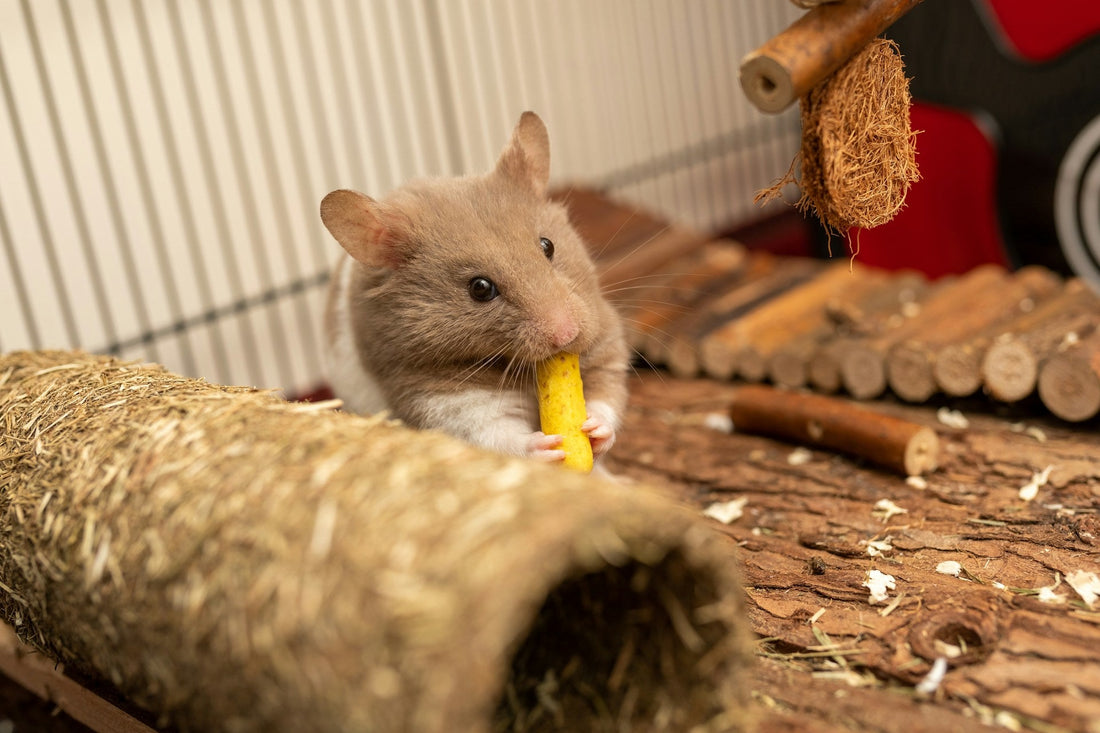How to Set Up a Hamster Cage

Setting up a hamster cage correctly is essential for your hamster's health and happiness. In this guide, we'll walk you through everything you need to know to create a safe, comfortable, and engaging environment for your furry friend.
Why Proper Hamster Cage Setup is Important
A well-setup hamster cage provides:
- Safety: Prevents escape and protects from hazards.
- Comfort: Ensures your hamster has a cozy place to sleep.
- Stimulation: Offers toys and activities to keep your hamster entertained.
Step-by-Step Guide to Setting Up a Hamster Cage
1. Choose the Right Cage
Size Matters: Hamsters need space to move around. A minimum of 360 square inches of floor space is recommended.
Material: Wire cages with a plastic base are popular, but glass tanks can also be used.
Accessibility: Ensure the cage has easy access for cleaning and feeding.
2. Bedding and Substrate
Safe Materials: Use paper-based bedding or aspen shavings. Avoid cedar or pine as they can be harmful.
Depth: Provide at least 2-3 inches of bedding for burrowing.
3. Food and Water
Water Bottle: Attach a water bottle to the side of the cage to keep it clean and accessible.
Food Bowl: Use a sturdy, tip-proof bowl for food. Scatter some food around the cage to encourage foraging.
4. Hideouts and Nesting Areas
Hideouts: Provide at least one hideout for your hamster to feel secure.
Nesting Material: Offer soft, unscented paper for nesting. Avoid cotton or fluffy materials that can cause blockages.
5. Toys and Enrichment
Wheels: A solid-surface exercise wheel is essential. Ensure it's large enough for your hamster.
Chew Toys: Provide wooden chew toys to keep their teeth healthy.
Tunnels and Climbing Structures: Use tunnels, tubes, and climbing toys to encourage exploration and exercise.
6. Cleaning and Maintenance
Spot Clean Daily: Remove soiled bedding and uneaten food daily.
Deep Clean Weekly: Change all bedding and wash the cage with pet-safe cleaner weekly.
Common Mistakes to Avoid
- Overcrowding: Don’t clutter the cage with too many items, leaving no space for movement.
- Inadequate Ventilation: Ensure good airflow to prevent respiratory issues.
- Ignoring Chewing Needs: Hamsters need to chew to keep their teeth healthy. Provide plenty of chew toys.
Setting up a hamster cage properly is crucial for your pet's well-being. Follow these steps to ensure your hamster has a safe, comfortable, and stimulating environment. For more products and tips on hamster care, visit our website.
